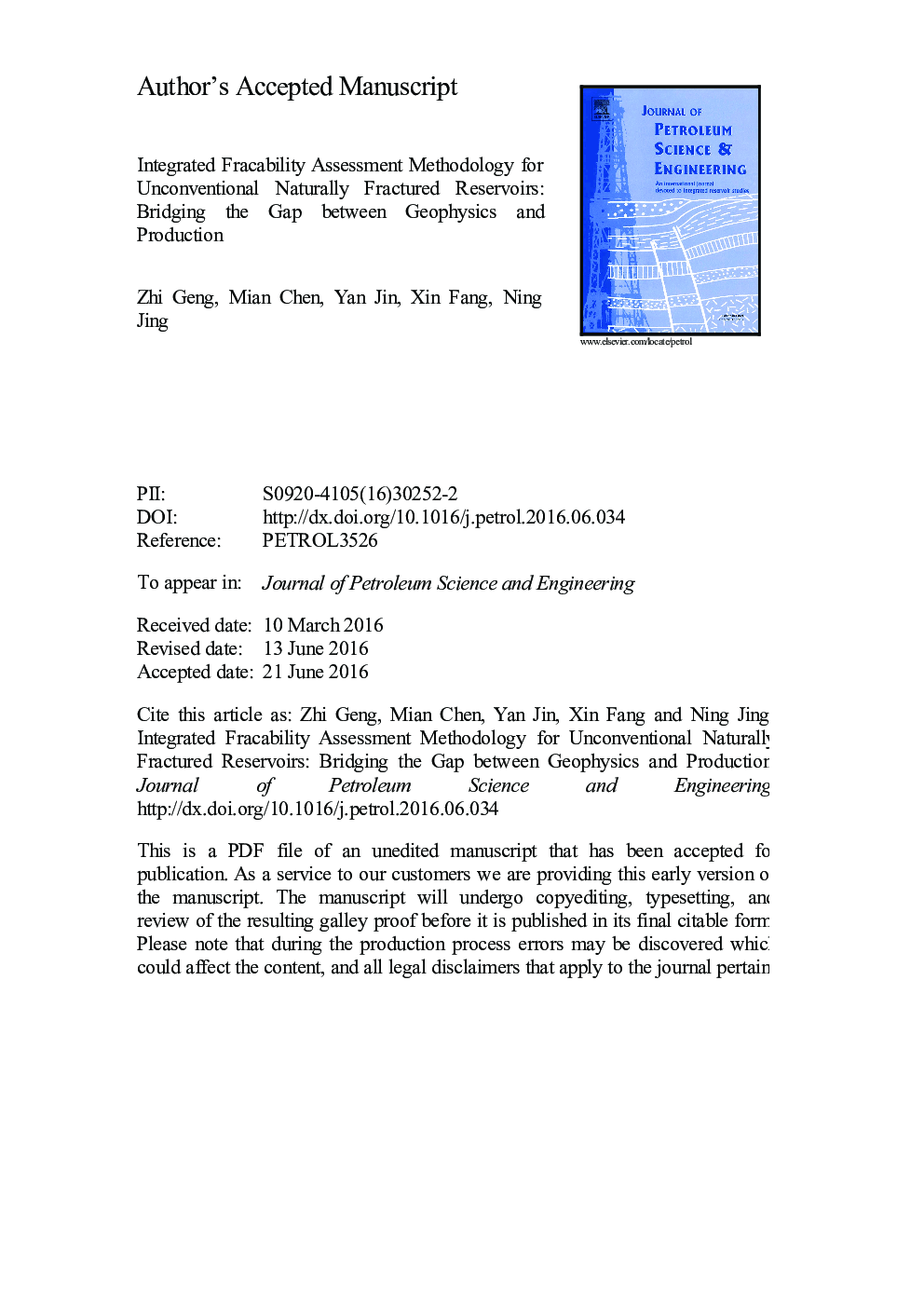| Article ID | Journal | Published Year | Pages | File Type |
|---|---|---|---|---|
| 8126199 | Journal of Petroleum Science and Engineering | 2016 | 29 Pages |
Abstract
Fracability evaluation in unconventional reservoirs is one of the most important initiatives for economic success. Most evaluation methods in geophysics and well logging are based on calculating rock mechanical properties, in which a frequently used term is brittleness. However, oil and gas production, mainly determined by effective natural fracture networks in unconventional low-permeability reservoirs, is the final goal of reservoir stimulation. In this work, a novel integrated methodology was proposed to correlate conventional post-stack seismic data to well production rate. It aims to pre-evaluate regional stimulation performance, facilitating investment decision-making in line with global oil prices and environmental consideration. Structural occurrence, seismic maximum curvature, and geomechanics parameters were combined in a physical model to evaluate underlying development and activation of natural fractures, result in the activation index F1. The potential of artificial induced fractures were quantified as normalized index F2 by integrating mechanical item based on fracture mechanics and fluid flow. Accordingly, a fracability sweetness index (Fsweet) model was built to correlate standardized well production rate (Qeff). A Case study of a naturally fractured igneous reservoir with 8 wells showed agreement between Fsweet and Qeff. A considerable part of highly active fractures with F1 of [0.9, 1] distributed over the area with lower curvature value. By contrast, the majority of fractures with lower F1 of [0.8, 0.9] located in zone with higher curvature value. The weight ratio α=0.06 indicated that in this case the overwhelming production contribution were from natural fractures, which were evidenced by well core picture. The field data demonstrates the prospect for predicting regional fracability variation, and suggests that it is possible to correlate fracability index with standardized well production rate. The insights contribute to well placement optimization and stimulation treatment design, breaking limitation of engineers' influence on individual wells, and hence reducing exploitation cost while enhancing ultimate recovery.
Related Topics
Physical Sciences and Engineering
Earth and Planetary Sciences
Economic Geology
Authors
Zhi Geng, Mian Chen, Yan Jin, Xin Fang, Ning Jing,
